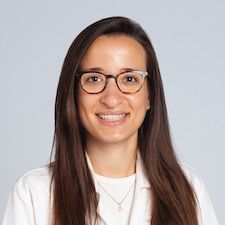Article
Cleveland Clinic's Top Ten Medical Innovations 2011
The technologies that will have the biggest impact on patient care in the short term are identified by physicians and scientists from the Cleveland Clinic.
This article originally appeared at iMedicalApps.com, part of the HCPLive network.
The Cleveland Clinic has unveiled what a team of its physicians and scientists believe are the most important medical innovations for 2011. Essentially, the honors are going to technologies that will have the biggest impact in the short term for the care of patients.
The Cleveland Clinic's Top 10 Medical Innovations for 2011 are as follows:
10. Capsule endoscopy for diagnosis of pediatric GI disorders: A pill-sized camera captures 50,000 high-resolution images during its painless six- to eight-hour journey through the digestive tract, proving better than x-ray at detecting small bowel ulcerations, polyps and areas of bleeding.
9. Oral disease-modifying treatment for multiple sclerosis: Before fingolimid was approved by the FDA this year, MS drugs had to be injected or infused on a regular basis. This oral medication effectively stops T-cells from attacking the myelin sheaths that cover nerve fibers.
8. Exhaled nitric oxide (NO) breath analysis for diagnosing asthma: A new hand-held diagnostic testing device measures a patient's level of exhaled NO, which is a biomarker for asthma. Monitoring NO levels allows doctors to more accurately tailor treatment strategies.
7. Transoral gastroplasty, or TOGA: A new experimental weight-loss option for obese patients who want to lose weight and improve their health without undergoing major surgery. This "scar-less" procedure represents a significant improvement in minimally-invasive bariatric surgery and losses approaching 40 percent of excess body weight can be expected within a year.
6. Telehealth monitoring for heart failure patients: Miniature implantable monitors to measure pulmonary artery pressure daily and at-home devices to monitor weight, heart rate and blood pressure of heart failure patients allow doctors to adjust medication quickly, improving patient outcomes and quality of life, while reducing re-hospitalizations.
5. Hepatitis C protease-inhibiting drugs: Two drugs awaiting FDA approval treat hepatitis C using protease inhibitors, which work by blocking a key enzyme that viruses need to copy themselves and proliferate. In clinical trials, cure rates for the protease inhibitors are higher than current hepatitis C treatments, with fewer side effects.
4. JUPITER study and statins for healthy individuals: The JUPITER (Justification for the Use of Statins in Primary Prevention: an Intervention Trial Evaluating Rosuvastatin) trial pointed out for the first time that many seemingly healthy people are at higher risk for heart disease than previously thought, suggesting that statins should be prescribed even to people with low LDL (bad cholesterol), if they have high C-reactive protein levels.
3. First therapeutic cancer vaccine approved by the FDA: While not a cure for prostate cancer, sipuleucel-T is the first cancer vaccine to receive FDA approval. Prescribed to men with advanced prostate cancer, the drug coaxes their own immune systems into attacking and removing the cancer, reducing the risk of death by 24 percent compared to placebo.
2. Anti-CTLA-4 drug (ipilimumab), a targeted T-cell antibody for metastatic melanoma: The effectiveness of ipilimumab in treating melanoma confirms the role of immunotherapy as an effective treatment. In patients with advanced stage III or IV melanoma, 23 percent were still alive after two years compared to 14 percent of patients who received standard treatment.
1. New molecular imaging biomarker for early detection of Alzheimer's disease: Currently, positive diagnosis of Alzheimer's is only possible upon autopsy. But a radioactive molecular imaging compound called AV-45 and a PET scan can allow doctors to "see" inside patients' brains to detect beta-amyloid plaques, the tell-tale signature of Alzheimer's.
Top 10 Medical Innovations: 2011
To read the entire article, click here.





